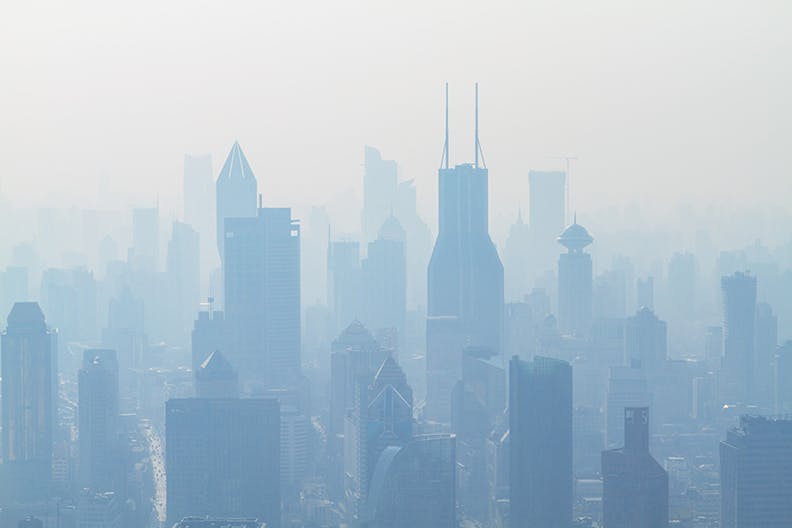
Most homeowners don’t expect that the air inside their homes is more polluted than the air outside their homes. We assume that the busy, traffic-polluted air outside will be worse for our overall health than the quiet air we come home to. However, in many cases, the air inside is worse than the air outside. This article will help you understand why testing your indoor air quality is highly important and how you can better care for your indoor air.
Air Inside Is More Polluted Than Outside
Air quality, as the world becomes more crowded, has become an important topic. In some cities, local government leaders suggest to residents that they stay inside due to horrific levels of air pollution. However, what happens if the air inside is just as bad, if not worse, than the air outside?
According to the United States Environmental Protection Agency, the air inside our homes is worse than the air outside. The EPA records that indoor air is typically two to five times worse than the air outside the home. There are many reasons why indoor air is often more polluted than outdoor air. The air inside your home is affected by the activities that happen inside your home and by the activities happening outside your home. Unlike the air outside, inside air is trapped, with limited airflow, meaning that the contaminants and pollutants can stay inside a room for weeks.
Pollutants Inside Your Home
The main factor that influences your air quality is the pollutants that you unknowingly bring inside your home. The top five causes of pollutants inside your house are:
- Wood and Coal Heating. Many homes located in colder climates may use fireplace heating in order to warm the air inside. However, burning wood and coal introduces pollutants to your air that can have damaging health side effects. Burning materials in your home can expose your family to carbon monoxide and particulate matter.
- Cooking Appliances. Although it’s unavoidable for most homes, using cooking appliances can actually add to the pollution in your home. The most common type of byproduct of using cooking appliances is particulate matter, carbon dioxide, and other harmful combustion byproducts.
- Cleaning Supplies. Using cleaning supplies can add ozone and other harmful chemicals into the air of your home. If cleaning supplies are used in an unventilated room, the person in the room may experience lightheadedness and shortness of breath.
- Paints. Many paints contain chemicals that may contribute to pollution in the air. Homes that had the walls painted before 1974 may contain lead, making it likely that there is lead in the air of your home.
- Building Materials. Homes that are used for building projects may be exposed to dangerous air pollutants. One of the most common air pollutants from building materials is asbestos and radon. These two pollutants can cause serious health side effects.
Indoor air pollutants can cause major health complications, especially for those who are already at risk for lung cancer. Helping your home to stay ventilated can reduce the chance of finding unnaturally high indoor air pollutants in your home.

Pollutants Outside Your Home
Poor air quality can also be caused by pollutants found outside the home that travel inside through windows, doors, and air vents. The most common outdoor air pollutants that can cause poor indoor air quality are:
- Chimneys. As one of the main sources of combustible byproducts, chimneys can contaminate the air around the home, which then seeps into the home through small cracks in windows and doors. The byproducts of burning wood are carbon monoxide, carbon dioxide, and other dangerous gases.
- Natural Gases. Some gases, such as radon, are a natural part of the planet. However, when radon is trapped in a home, the consequences are deadly. Radon seeps up through the foundation of homes. Breathing in radon greatly increases the chances that a person will have lung cancer later in their life.
- Volatile Water. Water can carry a wide variety of gases. When water is used in the home (like taking a hot shower), the gases trapped in the water disperse into the air. For the most part, this rarely becomes an issue. However, if you live in an area where contaminants could leech into the water, volatile water may be an issue for you.
If the air in your home isn’t well circulated, many pollutants remain idle in the rooms, waiting for family members to breathe the pollutants into their lungs. It’s important that homeowners attempt to keep the air flowing and circulating to ensure that the air remains fresh.
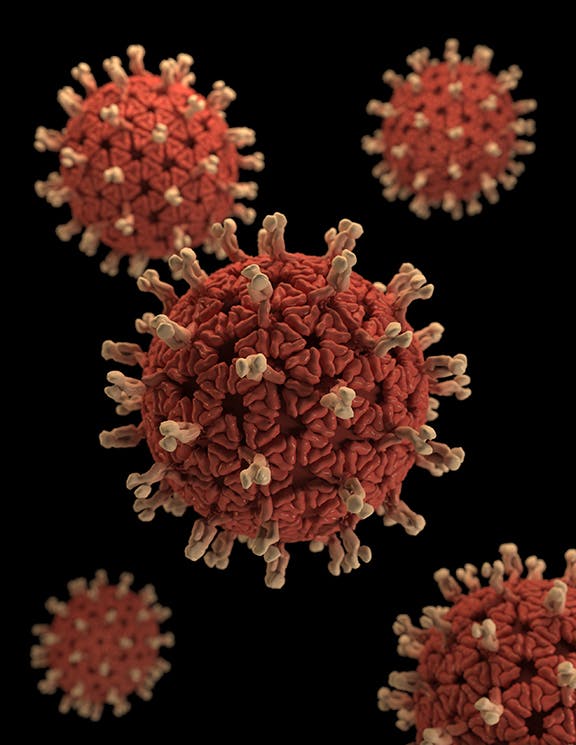
Symptoms of Indoor Air Pollution
Symptoms of indoor air pollutants may vary depending on the type of exposure. However, most symptoms can be categorized into three categories: combustion pollutants, chemical pollutants, and biological pollutants.
Symptoms of Combustion Pollutants
According to the California Air Resources Board, the main indoor combustion pollutants caused by combustion include “carbon monoxide (CO), nitrogen dioxide (NO2), fine and ultrafine particles, polycyclic aromatic hydrocarbons (PAHs), and formaldehyde.” Symptoms of breathing in combustion pollutants include:
- Headaches
- Dizziness
- Weakness
- Nausea
- Confusion
- Disorientation
- Asthma trigger
If a person is exposed to high levels of any pollutant from combustion, the person may experience unconsciousness or death. The most dangerous air pollutant is carbon monoxide, because the gas is toxic, odorless, and colorless, making it impossible to detect without a carbon monoxide detector.

Symptoms of Chemical Pollutants
In some cases, chemical and combustion pollutants will overlap. The main indoor pollutants that are included as “chemical” are chlorofluorocarbons, nitrogen oxides, sulfur dioxide, carbon dioxide, zone, acidic compounds and basic compounds, and chemical cleaning fluids. These chemicals are the results of chemical reactions, or they are manmade in the form of household and factory cleaners. Symptoms of breathing chemical pollutants include:
- Irritation of the eyes, nose, and throat
- Dizziness
- Headaches
- Coughing
- Nausea
- Disorientation
- Chest pain
If you are experiencing symptoms that you believe are from a chemical pollutant, you should seek fresh air immediately. If your symptoms persist or worsen, you should seek medical help immediately. Prolonged exposure to a chemical pollutant may lead to death or brain damage.

Symptoms of Biological Pollutants
Biological pollutants, according to the EPA, include “bacteria, viruses, animal dander, and cat saliva, house dust, radon, dust mites, cockroaches, mold, and pollen.” Although many immediate biological pollutants are not lethal (compared to carbon monoxide or ozone), they can still cause irritating symptoms to the people living with the air quality issue. Symptoms of biological pollutants include:
- Sneezing
- Watery eyes
- Coughing
- Dizziness
- Shortness of breath
- Fever
- Digestive issues
Some biological pollutants are not life-threatening, such as dust, cat dandruff, and pollen. However, other biological pollutants can cause severe health issues later in life. If you suspect that your home may be contaminated by biological pollutants, you should test your air quality.
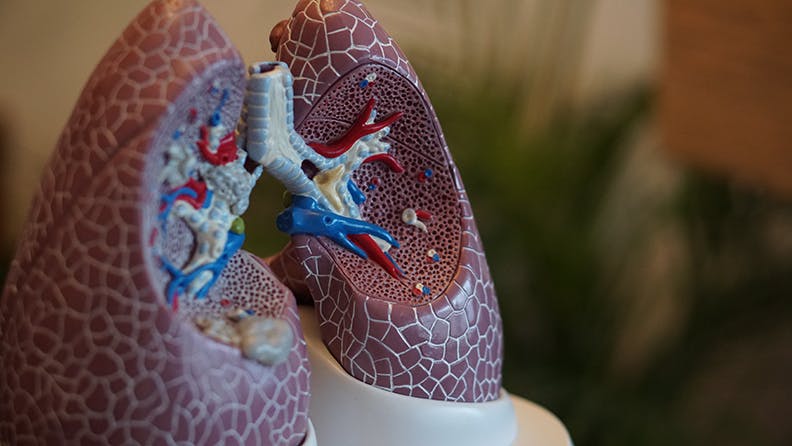
Importance of Air Quality Testing
The EPA is concerned about indoor air quality for a variety of reasons. Most Americans spend 90 percent of their time on the inside of their houses. Those who are in “at-risk” groups (such as elderly citizens, young children, and those with respiratory issues and heart conditions) spend even more time on the inside. As they breathe in contaminated air, their condition will often become worse, rather than recover.
Your lungs are a branch of different pathways, allowing the lungs to filter out unwanted gases and materials in order to provide your body with clean air. However, some pollutants can build up in what is called the “tracheobronchial tree.” When pollutants build up inside the lungs, the pollutants react to the mucous layer that protects the soft lung tissues from damage. Over time, pollutants wear down the mucus and are able to damage the lungs directly.
Some pollutants are heavier than other particles. Instead of being filtered out, these heavy particles coat the lungs, such as the tar from cigarettes. Secondhand smoke, which is when you breathe in the smoke from a cigarette without smoking the cigarette yourself, can cause damage over time to your lungs, increasing your chances of lung cancer and asthma.
Other pollutants that can severely damage your health are:
- Sulfur Dioxide. This type of gas is colorless but has a strong odor. It is created by burning fossil fuels such as coal, natural gas, and oil. When exposed to high concentrations of the gas, those exposed will experience irritation of the eyes, nose, throat, and lungs. It may also cause breathing issues and asthmatic symptoms by causing the lungs to swell.
- Ozone. Ground-level ozone is formed when the sun (heat) reacts with other pollutants that may already be present, such as nitrogen oxides. When a person is exposed to ground-level ozone, the person may experience coughing, watery eyes, throat irritation, discomfort in the chest, chest tightness, wheezing, and difficulty breathing.
- Lead. When lead is airborne, it can be extremely harmful to a person’s health, especially to children. Lead can become airborne when a person uses lead-based paint (which is now illegal). A person can also be exposed to airborne lead when there is lead found in the dust of an older building. Airborne lead can also be found in car shops, construction sites, and battery shops. Symptoms of lead poisoning include learning deficiencies in young children, heart disease, high blood pressure, and cardiovascular disease.

- Benzene. Benzene is a highly toxic gas that is widely used in the United States. It is typically used to make other products, such as plastics, paints, nylon, pesticides, and rubber. Benzene is usually found in higher concentration inside than outside. Symptoms of benzene poisoning include dizziness, headaches, confusion, tremors, irregular heartbeat, and unconsciousness.
- Particulate Matter. Air is filled with small debris that is almost impossible to see with the naked eye. When the air contains debris, it is called particulate matter. Particulate matter includes dust, pollen, soot, dust mites, organic compounds, and smoke. Breathing in the particulate matter can cause shortness of breath, difficult breathing, and increase your chances of experiencing respiratory diseases later in life.
- Oxides of Nitrogen. Nitrogen dioxide and nitric oxide are referred to as oxides of nitrogen. Oxides of nitrogen are key parts of forming smog and ground-level ozone. Breathing in oxides of nitrogen can cause respiratory infection (short term) and decrease lung efficiency (long term).
- Carbon Monoxide. Referred to as the silent killer, carbon monoxide is an odorless, colorless gas that kills hundreds of people every year. It is a byproduct of incompletely burning fossil fuels. When trapped in a home, the gas can suffocate a person, without the person knowing. Symptoms include dizziness, shortness of breath, confusion, blurred vision, and loss of consciousness.
- Molds. Some areas are extremely prone to growing mold infestations. Depending on the type of mold found in the home, the symptoms could vary. However, in most cases, victims of black mold exposure will experience headaches, shortness of breath, and asthmatic symptoms. Long term exposure will increase a person’s odds of developing lung disease and heart disease.
- Radon. This naturally occurring gas can cause lung cancer, shortness of breath, migraines, and lethargy. Radon is created by the natural breakdown of uranium in rocks and soils. Radon can enter a home through cracks in the foundation, or through the water pipes in the ground.
Some air pollutants will increase the chances that a person will experience cardiovascular disease later in their lives, while other pollutants can cause death in a matter of hours. All of these pollutants can be found in the home, making it imperative that homeowners test the air quality in their homes and regularly clean out the air inside.
Testing your air quality can help you to determine if your health is at risk. Poor air quality can damage your lungs, increasing your chances of experiencing cardiovascular diseases later in life. By testing for volatile organic compounds, toxic chemicals, and other pollutants, you can take preventative measures in order to better protect your health.

How To Test Indoor Air Quality
Testing your air quality at home is one of the smartest things you can do. To conduct an indoor air quality test, you will need to follow four easy steps. These steps will help you to get the most accurate reading and ensure that you can improve your home air quality after the testing. Here are four steps to better indoor air:
1. Buy an Indoor Air Quality Monitor
In order to conduct indoor air quality testing without calling a professional, you will need to purchase or rent the needed equipment. Air quality monitors aren’t cheap; however, they can save you pain in the long run. An indoor air quality monitor is a device that continuously measures the indoor environment.
Most air quality services will measure chemicals pollutants, particulate matter, and humidity. Others will also test for carbon monoxide, carbon dioxide, temperature, and formaldehyde. However, air quality professionals suggest that homeowners install a separate carbon monoxide detector to ensure the safety of your home.
Depending on the model, air quality monitors can cost between $50 and $400. The average cost of an air quality monitor is around $200. The monitor will display the levels of readable contaminants on the main screen and will alert you if a contaminant rises above a safe level. Later in this article, we will discuss which air quality monitors are best/worth the cost.
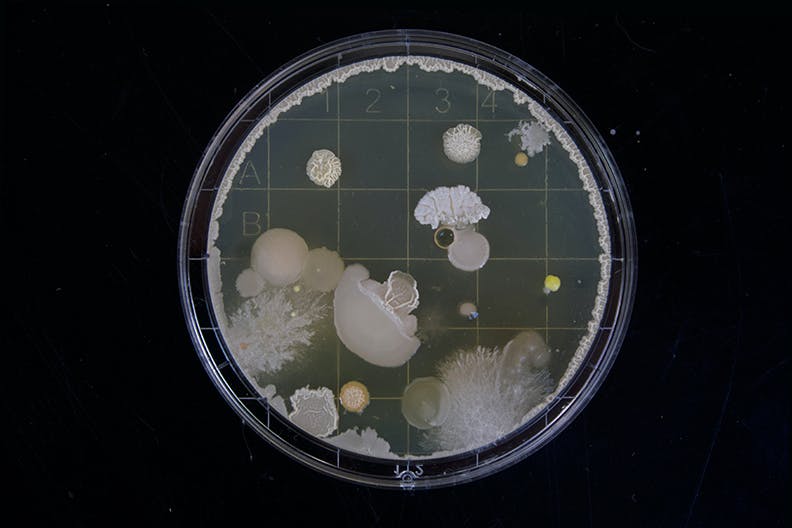
2. Invest in Mold Testing
Testing for mold is important if you are experiencing mold allergies or if you smell a musty odor but can’t find any mold in the home. According to Moldman, a professional mold testing service, these eight reasons warrant mold testing:
- You are experiencing allergic symptoms and are not sure why.
- You think you see mold but are not totally sure it is mold.
- You smell a musty odor but don’t see any obvious mold.
- There have been plumbing leaks or water issues in your home or office without professional cleanup.
- You want to make sure that mold levels have normalized after mold removal.
- You need evidence that airborne mold levels are normalized while buying or selling a home.
- You are a landlord or tenant and need evidence of a mold problem.
- You want a general assessment of your indoor air quality.
Simple mold testing can be conducted at home using a small, hand-held device that can be bought from your local hardware store. You can also conduct an at-home experiment using a petri dish to see if there is an abundant amount of mold spores in your home. Most homes will have mold (such as a moldy piece of bread). That’s easily handled by throwing out the bread. It only becomes a problem when the mold issue is affecting the air that you are breathing. If you suspect that your mold issue is severe, you should call a mold inspection and mold removal service to ensure that the entirety of the fungus is removed.
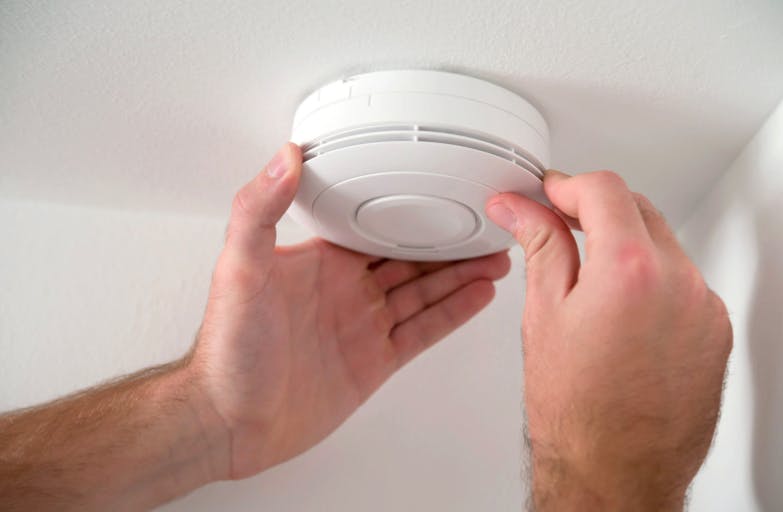
3. Install Carbon Monoxide Detectors
Carbon monoxide, infamously known as the “silent killer,” is a threat to every homeowner and renter. The odorless gas can cause severe health reactions and lead to death within hours of inhaling the gas. Carbon monoxide is undetectable without a carbon monoxide detector. Because of the gas’s danger, it is vital that homeowners install carbon monoxide detectors as a precaution.
Homeowners and renters looking for protection against carbon monoxide can choose between a regular carbon monoxide detector and a smart carbon monoxide detector. Most security professionals will recommend using the smart option since homeowners will have greater control and protection against carbon monoxide.
4. Test for Radon
Radon is a naturally occurring gas that can be extremely toxic if it is found in higher concentrations. If a person breathes in high amounts of radon, their likelihood of getting lung cancer increases exponentially. Since the gas is odorless, you will have to test the radon level in order to know if you have a problem.
The CDC reports that 1 in 15 homes have high levels of radon, ensuring that radon exposure is the second highest cause of lung cancer in the United States. To test your home for radon, you can buy an affordable kit from your local hardware store. The CDC always offers kits from the National Radon Program Services. Homeowners can call the National Radon Program Services at 1-800-SOS-RADON (1-800-767-7236) or go to their website.
Once you have a radon kit, follow the directions on the kit. According to the CDC, some kits will take a few days to finish testing the air, while others may take weeks. After the kit has analyzed the air, you will need to send in the results to a radon lab. If the results are higher than four picocuries per liter (pCi/L), you should test the home again. If the results are high twice, you have a radon problem.

Best Devices for Testing Indoor Air Quality
When looking for an air quality test kit, quality matters. Each part of your air quality testing will require a different device. In total, for complete air testing, you will need four devices: an air monitor, a mold detector, a carbon monoxide sensor, and a radon sensor.
Best Air Monitors
The best air monitors are:
- Airmon Palm Size Air Quality Monitor. This small portable air quality meter is one of the most budget-friendly air monitors on the market. The device is screenless, relying on the unit’s mobile app. Through the app, the user can access air quality data. The device measures small and large particulates, temperature, and humidity. The Airmon only costs $36 on Amazon.
- Awair Air Quality Monitor. The Awair air quality tester is more expensive than other options. However, it has a nice aesthetic design and it high quality. The device tracks PM2.5, VOCs, carbon dioxide, humidity, and temperature. Awair is compatible with other smart home features. This device can be found for $90. However, the device has received conflicting reviews about accuracy.
- IGERESS Air Quality Monitor. The IGERESS monitors formaldehyde, VOCs, small, medium, and large particulates, humidity, and temperature. The device does not measure carbon dioxide. The main benefit of this device is that it has a full-color, HD screen monitor that allows you to see each reading at the same time. The IGERESS monitor can be found online for $105.
Best Mold Detectors
The best mold detectors are:
- Mold Inspection Network DIY Testing Mold 3 Kit. This DIY kit is perfect for homeowners who are suspicious of having mold in their homes. The kit is inexpensive, easy to use on your home, and helps to put the homeowner’s worries quickly at ease. The kit can be found online for $45.95. The fee includes lab fees, transportation, and expert consultation.
- ESP Mold Test DIY Analysis Lab And Result Kit. The ESP mold kit is another DIY mold kit for do-it-yourself homeowners. The kit itself only costs $20 online, but it does not include the lab fees for analyzing the results.
- Mold Armor Do It By Yourself Testing Mold Kit. This DIY kit is the best price out of all of the options. The kit can be bought for $8.79 online. It includes three different ways to determine mold growth and does not require a lab confirmation.
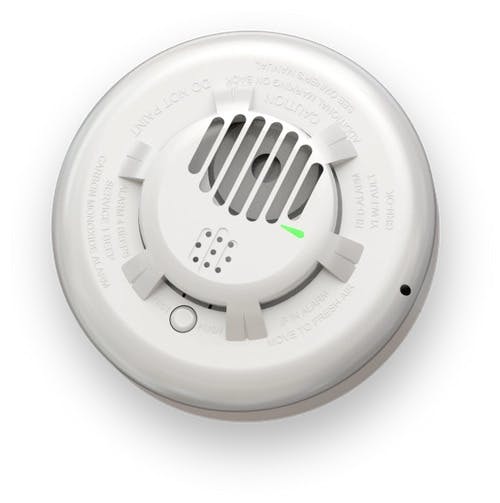
Best Carbon Monoxide Sensors
The best carbon monoxide sensor can be found at Cove Home Security. The carbon monoxide detector from Cove is “smart,” meaning that it connects wirelessly to other smart devices and can be monitored remotely from your phone. If the carbon monoxide detector is triggered, the home security company will be alerted, the family will be alerted, and anyone with mobile access to the alarm will be alerted. This ensures that any person in the home when the alarm is triggered (even if a child is staying at the house alone) will be protected.
The features included in the Cove carbon monoxide detector are:
- Smart Capacities. The Cove carbon monoxide detector is smart, which ensures that the homeowner will know the moment the alarm is triggered.
- Wireless Setup. The device is completely wireless. Since it is wireless, the device won’t be shut off when the home experiences a power outage.
- DIY Installation. Cove’s carbon monoxide detector can be installed without a professional installation team, ensuring that the homeowner has power over their home security.
- Aesthetic Design. Homeowners are often more drawn to nice aesthetic systems than bland looking ones. The Cove system is extremely aesthetically pleasing, featuring a sleek, modern design.
Best Radon Sensors
The best radon sensors are:
- Corentium Home Radon Detector. The Coretium detector is one of the priciest radon detectors on the market. However, it displays the incredibly accurate information in a graph format to show past radon levels, allowing homeowners to know when radon levels are increasing past normal. It is battery operated and gives reliable readings within the first hour. This sensor can be bought for $168.
- First Alert RD1 Radon Gas Test Kit. The First Alert kit is a DIY radon testing kit that allows homeowners to quickly test the radon level in their homes. The benefit of using this DIY kit is that it is cheaper than most alternatives. You can buy the First Alert radon kit for $15.
- Safety Siren Pro Radon Detector. The Safety Siren radon detector reads radon levels in the home continuously. It must be plugged into a safety outlet and uses a small screen to show the level of radon gas in the home. This detector can be found online for $150.
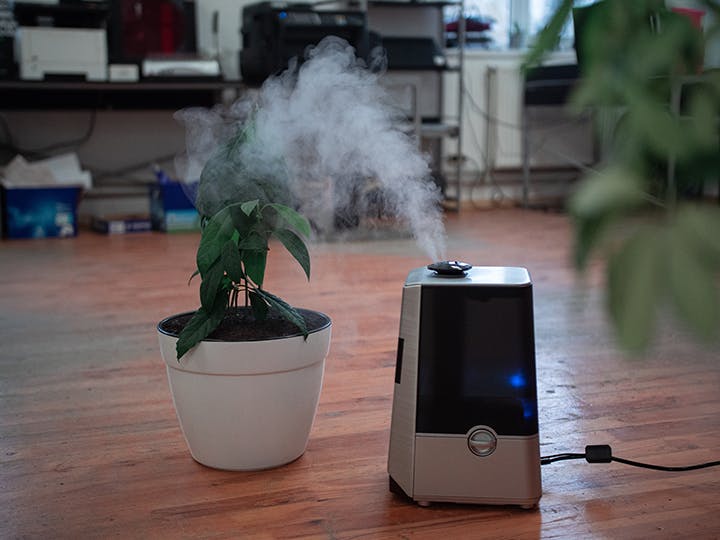
What to Do If Your Air Quality Is Poor
If you have poor air quality in your home, you may be exposing yourself and your family to fatal contaminants and harmful particles. If the IAQ testing shows that you have an indoor air quality problem, it’s important that you take the right steps to correct the situation and fill your home with healthy air. Here’s how you can clean the air on the inside of your home:
Use an Air Purifier
Using an air purifier is one of the best ways to reduce allergens, limit exposure to tobacco smoke, and filter the air in your home. The air purifier works similarly to a water purifier, trapping large particles within the filter and only releasing clear air. An air purifier is a great way to begin clearing the air in your home. However, air purifiers will not filter carbon monoxide and other chemicals in the air. Because they are mainly meant to clear large particles such as allergen particles, they shouldn’t be relied on to filter every pollutant from the air.
Fix Leaks in the Home
Mold and mildew in homes grow when there is a high humidity content in the air. Humidity can be caused by water that is trapped in the walls or flooring. Typically, this is a direct result of leaks. After treating mold and mildew, homeowners should fix any potential leaks zones in the house. This should help prevent future mold and mildew from growing.
Replace Air Filters
Your air conditioning unit is the main culprit for spreading contaminants around your home, especially if it has been a while since you last replaced the air filters. As your air filters become full of dust and other air particles, the filters become less and less effective. If left too long without being replaced, the air filters could do more to spread contaminants than to catch them.
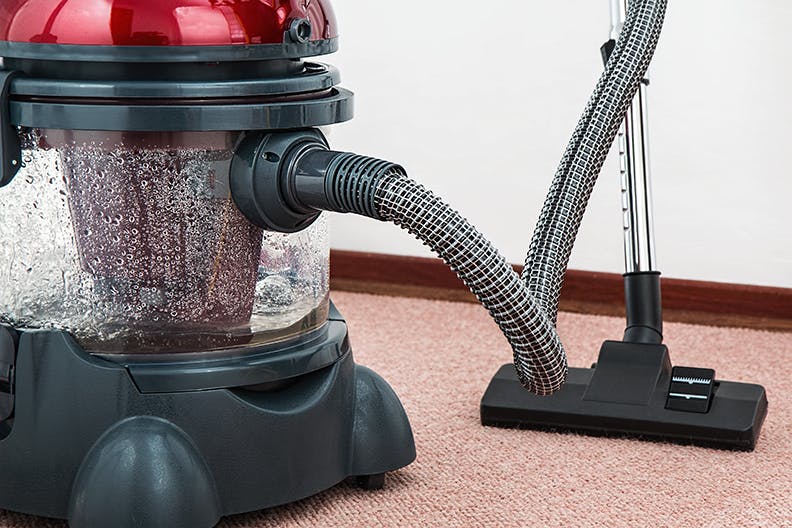
Clean Your Carpets
If you own a pet, your carpets hold pet dandruff, saliva, and other allergens. It’s important to have your carpets regularly cleaned in order to prevent those with allergies from experiencing symptoms. If you don’t have a pet, it’s still important to clean carpets and furniture because the fabric may catch pollen, dust, and other particles that may cause an allergic reaction.
Keep Your Home Ventilated
Ensuring that your home stays ventilated will help prevent contagions from staying in the air of your home. To ventilate your home, open windows on opposite sides of the house. If you live in the city, this might not be a feasible option for you, especially if the air outside is already considered to be pretty bad. However, if you live in a residential area with reasonably clear air, you can ventilate your home using the windows.
